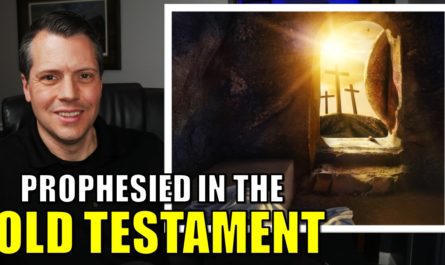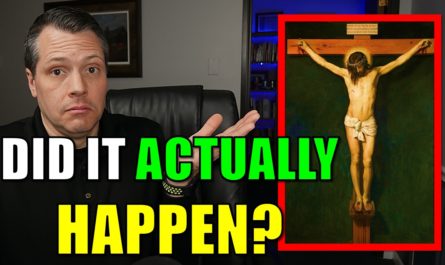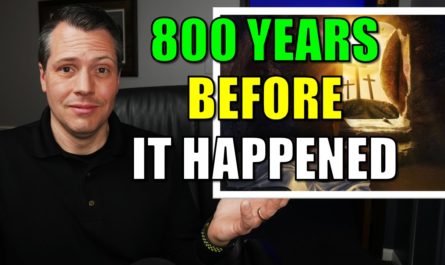Did anyone actually see Jesus after He rose from the dead? If so, then I would think that would be a fairly good indication that He did actually rise. So, in this article, we are going to look at a list of people who actually saw Jesus after His resurrection.
When we are trying to find out for sure if Jesus rose from the dead, I think would be fair to treat it like any other historical event. How do we know that anything happened in the past?
Take Napoleon’s conquest of the known world, for example. We believe it happened, but we weren’t there. Or what about Martin Luther posting the Ninety-Five Theses on the Wittenburg Church door in 1517? Or Lincoln’s Gettysburg Address in 1863. Most of us were not around to witness the bombing of Hiroshima in 1945, and the younger generation only knows about 9/11 from history books and YouTube documentaries.
If we were not there, how do we know these things actually happened? We know they happened because we have eyewitness accounts. People saw what happened and wrote about what they saw. That is how we know anything about history. We trust the witness of others. And when multiple people attest to the same event, we consider the evidence even stronger.
None of us witnessed the resurrection or the resurrected Christ with our own eyes, so we turn to the source that we turn to for all historical events—eyewitness accounts.
Luke, the physician-turned-detailed historian, painstakingly chronicled the lives of Christ and the early Christians. In the book of Acts, he said this:
The former account I made, O Theophilus, of all that Jesus began both to do and teach, until the day in which He was taken up, after He through the Holy Spirit had given commandments to the apostles whom He had chosen, to whom He also presented Himself alive after His suffering by many infallible proofs, being seen by them during forty days and speaking of the things pertaining to the kingdom of God. (Acts 1:1-3)
Many infallible proofs. Luke, not an eyewitness himself, knew that his research had uncovered irrefutable evidence.
Of course, no one actually saw the resurrection (except Jesus), but they saw the evidence. First there was a dead body, then an empty tomb, and finally a resurrected body. That made it rather obvious.
So, who were these people who gave eyewitness accounts of Jesus? We’ll start with the writers of the Gospels.
The gospel writers confirm the resurrection
Who were the Gospel writers? Matthew was one of the disciples of Jesus. Mark was most likely John Mark, who later travelled with Paul and Barnabas, and likely had access to all of Paul’s sources. We could even make the argument that he was the young man who ran naked from the Garden of Gethsemane when Jesus was betrayed (Mark 14:51-52). Luke was not an eyewitness, but undertook a thorough investigation of eyewitness accounts. Finally, John was a disciple and possibly the closest companion of Jesus.
We have four separate documents that tell the same story—Jesus died and was resurrected. There are enough similarities to confirm reliability and enough differences to confirm that there was no conspiracy between the writers.
But you might say, “That’s not fair! Of course they claim He died. After all, they are Christians!”
Wait a minute, though. When did they become believers? Not until after they realized that Jesus had risen. This leads us to the next reason to believe it—the change in the Disciples.
The change in the disciples confirms the resurrection
The Disciples of Jesus immediately transformed from a frightened group of men hiding behind locked doors to a bold army challenging the world with their new faith. Obviously, they saw something that they could only describe as a miracle. They were even willing to die for their belief in the resurrection, and some of them did.
While you might die for a lie, you don’t die for something you know is a life. Whether or not the resurrection is true, these guys believed it, and it changed their lives.
The late Justice Antonin Scalia, in a speech at a prayer breakfast with lawyers and law students at the First Baptist Church in Jackson, Mississippi on April 9, 1996, was talking about how Christian beliefs are scorned by society. In describing the irrationality of rejecting the resurrection of Jesus, he said that the view of the “worldly wise” is that…
…everything from Easter morning to the Ascension had to be made up by groveling enthusiasts as part of their plan to get themselves martyred.[i]
Unlikely indeed.
So far, we have the Gospels that confirm the resurrection as well as the change in the disciples. But then Paul tells us that there were hundreds more who could vouch for it.
Multiple eyewitnesses confirm the resurrection
…and that He was seen by Cephas, then by the twelve. After that He was seen by over five hundred brethren at once, of whom the greater part remain to the present, but some have fallen asleep. After that He was seen by James, then by all the apostles. Then last of all He was seen by me also, as by one born out of due time. (1 Corinthians 15:5-8)
Jesus was seen in person by many people:
- Peter (Cephas)
- The Twelve (disciples)
- 500 at once
- James (the brother of Jesus)
- All the Apostles
- Paul himself
We also read in the New Testament that the women who first showed up to the tomb were witnesses, as well as the two men who ran into Jesus on the road to Emmaus.
If we can believe anything historical, we must believe the resurrection. And remember what I have pointed out before: if the resurrection happened, Christianity is the one true religion.
[i] http://scholarship.law.nd.edu/cgi/viewcontent.cgi?article=1838&context=ndlr – I have this document labeled “Scalias Sermonette” under the file for my religious liberty book.



